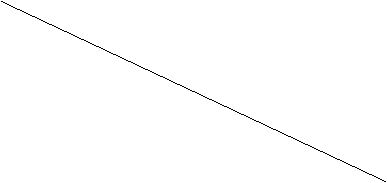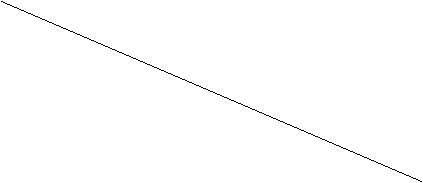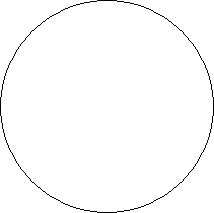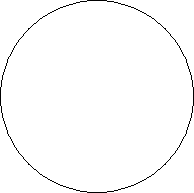THE INFLUENCE OF SCIENCE AND TECHNOLOGY
ON ART AND CULTURE AND THE SEGMENTS OF CULTURE DERIVED THEREOF
(Based on the Hannes Bohringer’s
system)
Vladan Zdravkovic
vzc@hig.se
Abstract
The system of art and culture in the 20th century
is very well represented up by Hannes Bohringer[1].
In this paper we propose extension of the Bohringer’s system. We believe those
changes are necessary and are result of development of the new technologies in
last fifteen years. Bohringer’s system should be amended with the “area-circle”
of communication about art, the circle of “technological apparatus” and the
virtual space of art. The modification of Bohringer's system is shown
graphically.
Culture and
art, as well as the changes in them, were for a long time directly related to
the changes in science and technology. Practically, from the moment that man
started painting on a cave walls, art and culture have been an inseparable
system. Artists were usually scientists as well. Painters independently
discovered new painting materials, new approaches to pictures, including new
ways of perception and reception. Musicians discovered instruments. A
paradigmatic example of such attitude can be found in the thought and work of
Leonardo[2].
Probably the greatest artist of all times, Leonardo d' Vinci[3],
is also one of the greatest scientists in human history. With his discoveries
in the field of civil engineering, medicine, engineering, mechanics, i.e., in practically
all areas of science at the time, he is a prototype of everything that it was
considered an artist should be, before and after the Renaissance – the
artist-cum-scientist. Libraries above all, but also museums and other cultural
institutions such as reading rooms and theaters, are constantly implementing
the practical achievements of science and technology. This relationship can be
considered inseparable up to the second half of the XIX century, when art
suddenly separated from technology, and participation in artistic creation was
considered completely separate from all science, and even all knowledge.
During the time of Ancient Egypt[4]
and later Rome, libraries attempted to find the most suitable material for
writing on, preserving and for the storage of various materials used for
writing on, frequently papyrus, clay or stone tablets. It is well known that
Alexandrian and Roman libraries had complex mechanisms for the finding and
faster transfer of papyrus. The Roman theatres had technologically very
complicated mechanisms for moving scenes and achieving scene effects. Roman
reading rooms had pulley systems, which changed the position of heavy tablets
proclaiming the emperor’s decrees and changes in law[5].
The baroque primarily the French Theatre of the XVII century, was theatre that
served technology, in the sense that the plays were in the function of the
technological inventions of the time. That relationship was severed in the
middle of the XIX century, when it was considered that art should not be
related in any way to technology. First years of the XX century witnessed
several artistic movements that had been connected with technology and on that
way with science, as was futurism, constructivism, suprematism and kinetic art.
But these movements never have been mainstream. It was only from the seventh
decade of the XX century that science and technology re-gained a significant
role in art.
On the other hand, culture never has a “break of relations”
with science. While art and science were “separate”, scientific achievements
were applied in different fields of culture with the aim of protecting
historical heritage and primarily, that of broadening and improving
communication.
Especially important was an increased production of the
written word: from books, through lexicons, encyclopaedias, up to daily and
monthly newspapers and magazines. This increase of production was caused by the
development of the publishing industry. The broadening of communication
continued further through radio, and later, television.
It can be said that publishing, radio and television had a
decisive role in the “broadening of culture” into “all layers of society”,
i.e., beyond the “higher classes”, who were, until the XX century, the only
class of people who were able to follow and participate in cultural life. The
creating of cultural property and its wide-spread expansion of this period can
be compared only to the period of the reign of the Emperor Augustus in Rome[6].
The condition that had to be fulfilled for such a massive
expansion of culture to be possible was the free inter-change of cultural
products, as well as the broadening of general education, since these are the
necessary conditions for the democratisation of society. Let’s bear in mind
that in Ancient Rome, in fact, in the whole Roman Empire, each citizen, and
even certain categories of slaves, who were incidentally all paid for the work
they did, were enabled a free education, and free entry into theatres,
libraries, and reading rooms. The talented amongst them were enabled stipends
so that they could devote themselves to study and self-enhancement. The
stipends were available to slaves as well[7].
It has taken almost 2000 years for culture to reach that level once again.
Today free radio and television, and relatively low-cost publications, as well
as free libraries and funds promoted art and culture for those less well-off.
Last 80 years of the 20th century[8],
political social and cultural systems remain more or less the same.
Democratisation of the process of learning about art, involvement in cultural
life and creation of artworks is something that distinct the 20th
century from the time before[9].
The system of art and culture in the 20th century is very well
represented up by Hannes Bohringer[10].
Bohringer graphically represented (Graphic 1) the social system of art and
culture in the following way:
In
the centre is the work of art

Institutions
for the
Preservation
of art (museums, libraries)

Institutions
for the distribution of art
 (book-shops,
cinemas)
(book-shops,
cinemas)




![]() Systems
of thought,
Systems
of thought, ![]()

![]()
![]()
 (science,
(science,
![]() aesthetics,
aesthetics,
![]() criticism)
criticism)
![]()
![]() The
space of art
The
space of art
![]() Institutions
of art and education in culture
Institutions
of art and education in culture
Cultural
politics
(non-state-owned
art institutions)
Graphic 1.
Bohringer’s system
should be amended with an “area-circle” of communication about art, which would
include the following: different aspects of information and communication about
art and culture, advertising of art work and cultural institutions,
word-of-mouth and communication between recipients of artistic products and
services related to culture and art, which constitutes the inter-change of
information that does not belong to the system of thought in the Bohringer's
system. The area of communication about art encompasses all areas that
Bohringer introduced, since information and communication permeate and affects
all of the listed fields. The modification of Bohringer's system is shown on
Graphic 2.
In
the centre is the work of art

 Communication
about art
Communication
about art
Institutions
for the preservation of art

 (museums,
libraries)
(museums,
libraries)




![]() Institutions
of the distribution
Institutions
of the distribution ![]()
![]()

![]()
![]()

of
art (book-shops, cinemas) ![]()
![]()
![]() Systems
of
Systems
of
thought
(science, aesthetics, criticism)
![]()
The
space of art

Institutions
of art and education in culture
Cultural
politics
(non-state-owned
art institutions)
Graphic 2.
The essential, drastic cultural change[11]
in relation to the period of Ancient Roman was brought about with the
introduction of computers into culture. 20th century spreads art and
culture but essentially did not bring new quality to art or new art form
besides film. Last 10 years of 20th century intimate new space of
art and culture that will bring dramatic and qualitative changes. Technology –
above all, media and computer technology has a dominant role in the expansion
of art and culture to diverse categories of users. Thanks to computers, art and
culture are now, more than ever, available to a very wide range of users,
despite the problems that the use of computers brings. Computers are replacing
magazines, books and even television, which was until now considered the
fastest transmitter of cultural news and products, as a means of making culture
more accessible to the public. The role of television is becoming surpassed, so
that television in the future will become just a sub-system of the Internet.
Today, and during the next few years, Internet will still be a “subsystem” of
television[12], but
already today, there are Internet television channels, and practically all the
”larger” television stations "air" own programs on the Internet[13].
Use of computers bring the new space - the virtual space to
users. It brings the virtual space to world of art, where art works exists in
the virtual environment. Computers bring the virtual space to the world of
culture, where culture posses new creative and useful tools. Databases and
search engines make our life easier. Abilities for new communication and
expression as are wide use of metaphor, graphical and spatial tools in art and
culture make big difference from the past. Virtual spaces and new tools ask for
new technology, something that is so embedded in world of culture and art that
new artworks wouldn't exists without it. Technology was always important in the
process of creation of art. But before time of video and computers, from the
moment when art has been created artwork exists independently from technology.
Today exists artworks and some culture fields that are able to evince just
through computers. Mentioned artworks and spaces of culture do not exist
without computer technology.
In the context of new art related to the use of computers,
but also “classical” artistic media that necessitates technological or other
apparatus for reception of the work, such as film or holographic pictures,
there is a circle of “technological apparatus” which enables the work of art to
be available to the artist himself and to the recipient. That apparatus today
is represented by computers, virtual reality systems, television, film
projectors, laser or light beams, projectors, light-show reflectors, virtual
blasters (for “smell-related” installations). Somebody could claim that
technology does not have a place in the system that represents a social system.
But technology in this system is not just a tool but necessary element -
enabler and realizator of art work or cultural space. In relation to Bohringer’s scheme, this
circle would be placed in between work of art and communication about art, as
it is necessary for existence of the world of art.
The third circle that does not exist in
Bohringer’s system is the virtual space of art. In his system, Bohringer
defines a “circle” of the space of art, as a physical space where the work of
art is placed. With the onset of virtual and multimedia art a “new space” for
the existence of works of art is created. We call it the “virtual space of art
and culture”. For video art, film or early forms of computer multimedia we need
technology to expose the work of art. But even if we would destroy technology
artworks will exists on media. For new
art in virtual environment if we would destroy the technology, artworks will
not exist[14]. The
virtual space of art comes after circle of technology apparatuses and before
the communication about of art. The new system, based on Bohringer’s system, is
shown on Graphic 3:
 In
the centre is the work of art
In
the centre is the work of art
 Technological
apparatus
Technological
apparatus
 Virtual
space of artwork
Virtual
space of artwork
 Communication
about art
Communication
about art

 Institutions
for the preservation of art
Institutions
for the preservation of art

 (museums,
libraries)
(museums,
libraries)





 Institutions of the
distribution
Institutions of the
distribution ![]()
![]()
![]()

![]()
![]() of art (book-shops, cinemas)
of art (book-shops, cinemas)
Systems
of
![]() thought
(science, aesthetics, criticism)
thought
(science, aesthetics, criticism)
![]() The
space of art
The
space of art
![]()
![]() Institutions
of art and education in culture
Institutions
of art and education in culture
Cultural
politics
(non-state-owned
art institutions)
Graphic 3.
Literature
Aronowitz, Stanley (ed), Technoscience and Cyber Culture,
Routlage, London, 1996.
Benthall, Jonathan, Science and Technology in Art Today,
Thames and Hudson, London, 1972.
Bohringer, Hannes, Begriffsfelder Von der Philosopie zur
Kunst, Berlin, 1985.
Bolter, Jay David, Writing Space, Lawrence Erlbaum associates,
Publishers, Hillsdale, USA, 1991.
Conley, Verena Andermatt
(ed), Rethinking Technologies,
University of Minnesota Press, Minneapolis and London, 1993
Durant, Will, Caesar and
Christ: A History of Roman Civilization from Its Beginnings to A.D. 337 (Story
of Civilization, Vol 3), Simon & Schuster, USA, 1983.
Durant, Will, Story of
Civilization: Our Oriental Heritage, Fine Communications, USA, 1997.
Featherstone Mike, Lash,
Scott (Ed), Space of Culture, Sage
Publications Ltd., London, 1999.
Godwin, Joscelyn, Harmonies of Heaven and Earth, Thames
and Hudson, London, 1987.
Moser, Mary Anne (ed), Immersed in Technology. Art and Virtual
Enviroments, MIT press, Cambidge, 1996.
Norman, Donald, Things that Make Us Smart, Parceus
Books, Reading, USA, 1993.
Novak, Marcos, Liquid Architectures in Cyberspace,
Cyberspace: First Steps, MIT Press, Cambridge, USA, 1991.
Penny, Simon (Ed), Critical Issues in Electronic Media,
State University of New York Press, New York 1995.
Zdravkovi}, Vladan (dir), Leonardo, The Museum of Science and
Techniques, Serbian Academy of Science and Arts and Center Group, Belgrade,
1997.
Zdravkovi}, Vladan, Ispri~ane pri~e,
A&M, Beograd, 1996.
Zdravkovi},
Vladan, The Influence of Virtual
Reality and Computer Multimedia on Contemporary Art and Culture,
University of Arts, Belgrade, 2001.
Zdravkovi}, Vladan, Virtuel, Center Group,
Belgrade, 1996.
Zdravkovic,
Vladan, Interactive Art - Manifest,
AFPC, Zuid-Scarwoude, Netherlands, 1998.
Zdravkovic, Vladan, Interactive
Feature Film Babylon, Computer Graphics 36(2), ACM, New York, 2002.
Zdravkovic,
Vladan, Using Agents to assist spectators to orient in interactive
dramaturgy, Journal Being Virtual - Winter, Sweden, 2001.
Rakovic, Dejan, On brain's neural networks and brainwaves modeling: Contextual learning and psychotherapeutic implications, Proc. 2nd Conf., Biomedical Research in 2001, IEEE/EMBS (Vic), Melbourne, Australia 2001
Rakovic, Dejan, Transitional states of consciousness as a
biophysical basis of transpersonal transcendental phenomena, Int. J.
Appl. Sci. & Computat., Vol.7, No.3, 2000